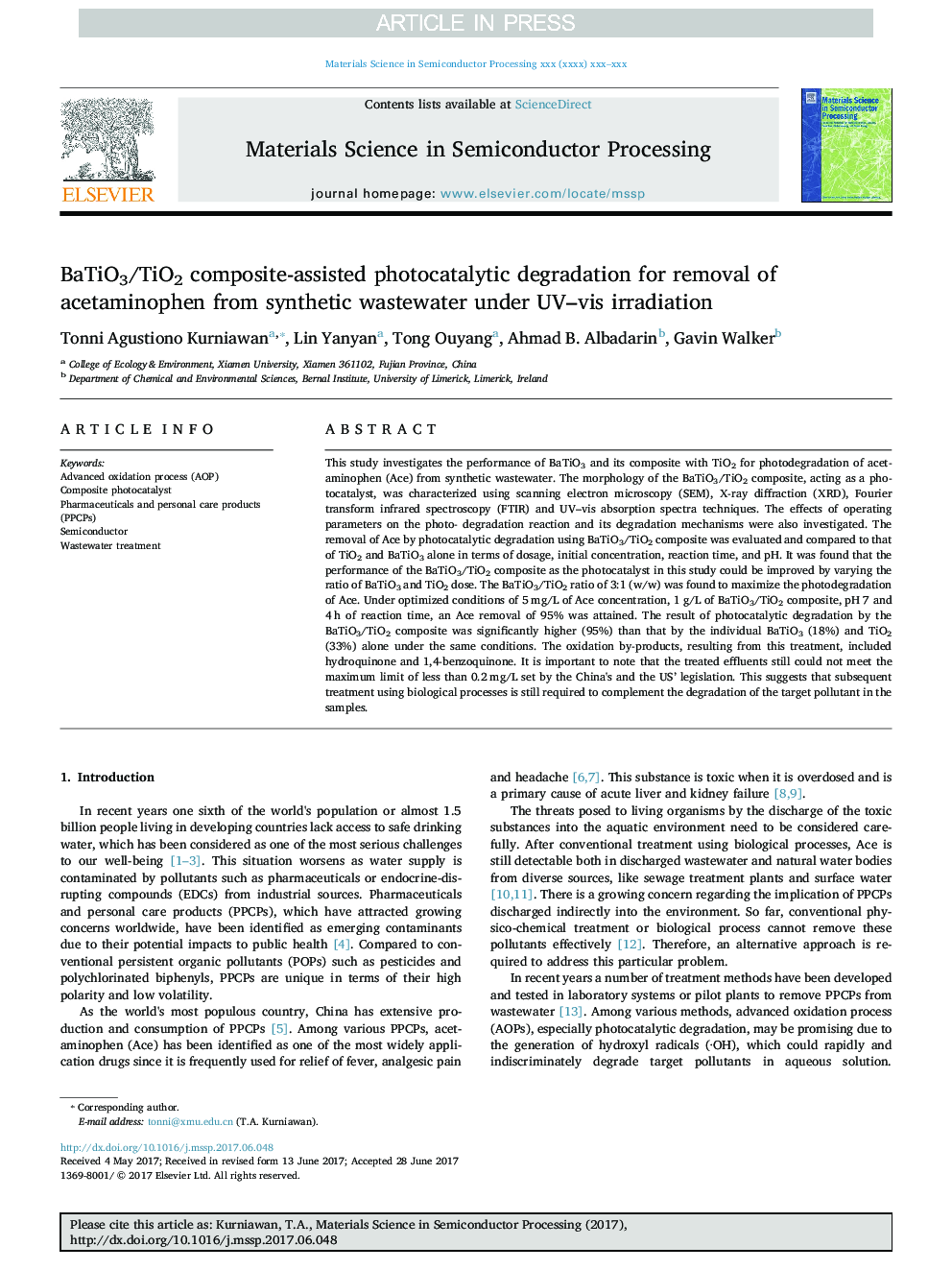| Article ID | Journal | Published Year | Pages | File Type |
|---|---|---|---|---|
| 7118194 | Materials Science in Semiconductor Processing | 2018 | 9 Pages |
Abstract
This study investigates the performance of BaTiO3 and its composite with TiO2 for photodegradation of acetaminophen (Ace) from synthetic wastewater. The morphology of the BaTiO3/TiO2 composite, acting as a photocatalyst, was characterized using scanning electron microscopy (SEM), Χ-ray diffraction (ΧRD), Fourier transform infrared spectroscopy (FTIR) and UV-vis absorption spectra techniques. The effects of operating parameters on the photo- degradation reaction and its degradation mechanisms were also investigated. The removal of Ace by photocatalytic degradation using BaTiO3/TiO2 composite was evaluated and compared to that of TiO2 and BaTiO3 alone in terms of dosage, initial concentration, reaction time, and pH. It was found that the performance of the BaTiO3/TiO2 composite as the photocatalyst in this study could be improved by varying the ratio of BaTiO3 and TiO2 dose. The BaTiO3/TiO2 ratio of 3:1 (w/w) was found to maximize the photodegradation of Ace. Under optimized conditions of 5 mg/L of Ace concentration, 1 g/L of BaTiO3/TiO2 composite, pH 7 and 4 h of reaction time, an Ace removal of 95% was attained. The result of photocatalytic degradation by the BaTiO3/TiO2 composite was significantly higher (95%) than that by the individual BaTiO3 (18%) and TiO2 (33%) alone under the same conditions. The oxidation by-products, resulting from this treatment, included hydroquinone and 1,4-benzoquinone. It is important to note that the treated effluents still could not meet the maximum limit of less than 0.2 mg/L set by the China's and the US' legislation. This suggests that subsequent treatment using biological processes is still required to complement the degradation of the target pollutant in the samples.
Keywords
Related Topics
Physical Sciences and Engineering
Engineering
Electrical and Electronic Engineering
Authors
Tonni Agustiono Kurniawan, Lin Yanyan, Tong Ouyang, Ahmad B. Albadarin, Gavin Walker,
